Intersectional Resources | Diversity, Equity and Inclusion Company
A collection of diverse, equitable, accessible and inclusive best practices to help drive change from where you are.
Exclusive: LinkedIn to pay its ERG leaders
Global ERG co-chairs at LinkedIn serve two-year terms and will receive $10,000 at the end of each year of service.
It Starts with Words: Unconscious Bias in Gender, Race, and Class in Tech Terminology
The tech industry is notoriously known as a heteronormative, white, male-dominated space; a bubble of intergenerational wealth, patriarchy, and privilege. The language and technical terms used in the tech industry are a reflection of those who are represented, hold the power, and control discourse.
5 Powerful Ways to Take REAL Action on DEI
People need new ways to think about and talk about diversity. Leaders need new skills to enable equity and inclusion in the workplace. And organizations need scalable ways to ensure that their diversity and inclusion initiatives avoid common mistakes and are solid and sustainable.
10 LGBTQ Resources for Mentors
Jessica Cunningham, research assistant at the MENTOR/UMB Center for Evidence-Based Mentoring, compiled the following list of 10 LGBTQ-specific resources (listed in alphabetical order) to help mentors build their capacity as advocates.
Trying to ‘De-Bias’ Faculty Recruiting
Can a shift in the way candidates are evaluated eliminate bias based on gender, race and background?
If There’s Only One Woman in Your Candidate Pool, There’s Statistically No Chance She’ll Be Hired
Despite the ever-growing business case for diversity, roughly 85% of board members and executives are white men. This doesn’t mean that companies haven’t tried to change. Many have started investing hundreds of millions of dollars on diversity initiatives each year. But the biggest challenge seems to be figuring out how to overcome unconscious biases that get in the way of these well-intentioned programs. This article provides recently conducted research that suggests a potential solution.
How to overcome our biases? Walk boldly toward them.
Our biases can be dangerous, even deadly — as we’ve seen in the cases of Michael Brown in Ferguson, Missouri, and Eric Garner, in Staten Island, New York. Diversity advocate Vernā Myers looks closely at some of the subconscious attitudes we hold toward out-groups. She makes a plea to all people: Acknowledge your biases. Then move toward, not away from, the groups that make you uncomfortable. In a funny, impassioned, important talk, she shows us how.
The Four Principles of Accessibility
To help simplify the complex subject of accessibility, we’ve put together a quick guide to accessibility’s P.O.U.R principles.
Why Is Black Talent ‘Opting Out’ of Corporate America?
Talented but frustrated Black executives are leaving big firms at an alarming rate. Will recent tensions force companies to create better career paths for them?
How to Hire - Stop Hiring for Culture Fit
Finding the right people is also not a matter of “culture fit.” What most people really mean when they say someone is a good fit culturally is that he or she is someone they’d like to have a beer with. But people with all sorts of personalities can be great at the job you need done. This misguided hiring strategy can also contribute to a company’s lack of diversity, since very often the people we enjoy hanging out with have backgrounds much like our own.









